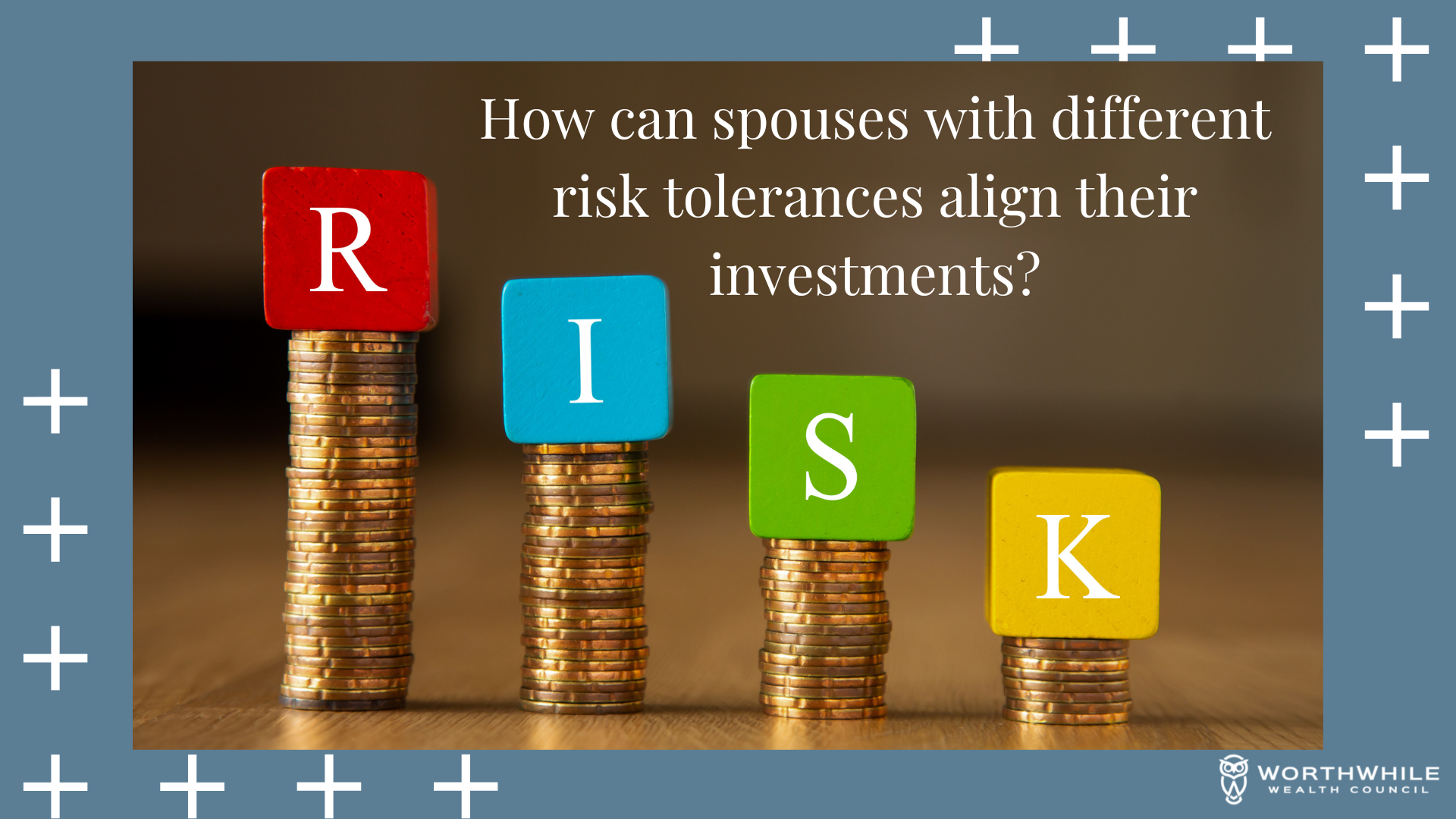It’s very normal for couples to have different appetites for risk. Getting on the same page about how to address this in terms of investments can be tricky. What many people do is simply invest the accounts in their own name, according to their own risk tolerance. But this approach has its challenges.
The main challenge is that even though the accounts are in individual names, the money is really family money and is earmarked for your shared future. It’s not reasonable to expect that each spouse will have no opinions on the portfolio of the other spouse.
As a starting point, encouraging both partners to think about risk in a broader sense can be helpful. When it comes to investments, acknowledge that there is always some risk. Even guaranteed investment certificates and high interest savings accounts carry risk. There is a risk of outliving one’s money, and the risk of having your purchasing power eroded by inflation.
When it comes to market-based investments there are different kinds of risk. Some of those risks – such as sector and company specific risks – can be eliminated through diversification. Other risks such as macro-economic and systemic risks, cannot be completely diversified away, but they can certainly be greatly reduced and nearly eliminated through a long-term focus and a disciplined investing process.
Often, the biggest risk with a well-diversified yet aggressive portfolio is not the investment itself, but rather the investor behavior in the face of volatility. Two of the biggest factors of investor success are: a high degree of volatility composure, and the personal financial capacity to weather the ups and downs of the market.
Capacity for risk is one of the things that risk-loving people often overlook. This is an area, where the safety-loving spouse’s inclinations are very valuable. Each of you brings an important perspective to the table.
When considering personal capacity for risk, there are two basic questions that you need to ask yourselves:
- How much risk are we taking on in all domains of our life?
- How can we safely manage risk in our life?
For example, factors that could contribute to risk, and lower financial capacity for more risk could include: having unpredictable or unreliable income; having a large amount of debt, including a really large mortgage; having cash flow deficits; and not having adequate insurance in place. Factors that contribute to security and increase capacity for more risk could include: a secure, predictable income; highly transferrable skills; having a surplus of cash flow; a company pension; low debt; a substantial emergency fund; and being adequately insured.
At least some of these risk factors will be within your control. By minimizing or eliminating those risks that are within your control, you will increase your shared capacity to be more aggressive with your investment portfolios.
Another question that is important, but often overlooked, is how much risk do you need to take in order to attain your financial goals? To a large degree, your investments can be shaped around what kinds of returns you actually need, and this should be the starting point for a conversation between the two of you. To do this, you will need to get a sense of your current savings levels toward your financial goals. An advisor at WWC can help you plan and calculate these figures!
Once you understand the returns that you need, you can have a substantial conversation with your spouse about how to fine-tune your approach to balance your individual comfort levels with respect to asset allocation, savings levels, and current lifestyle spending needs. If, however, you are aiming for significantly higher returns than what you need, and thereby taking on significant amounts of additional risk – you need to ask yourself why. What purpose does this additional risk serve in your financial plan? And is this a purpose on which both you and your spouse are aligned?
Change doesn’t happen overnight, but if you think of risk broadly, safely manage the risks that can be managed, increase your level of volatility composure through financial education, and determine an asset allocation that is appropriate to your current lifestyle and future shared vision, then, over time, it is likely that your views on the investment piece of your financial plan will converge.
This commentary was originally posted by NATASHA KNOX, CFP® April 20, 2021
Source: https://www.theglobeandmail.com/investing/personal-finance/young-money/article-when-it-comes-to-investing-how-can-two-spouses-with-different-risk/
**Disclaimer: This material has been prepared for informational purposes only, and is not intended to provide, and should not be relied on for, tax, legal or accounting advice. You should consult your own tax, legal and accounting advisors before engaging in any transaction.


